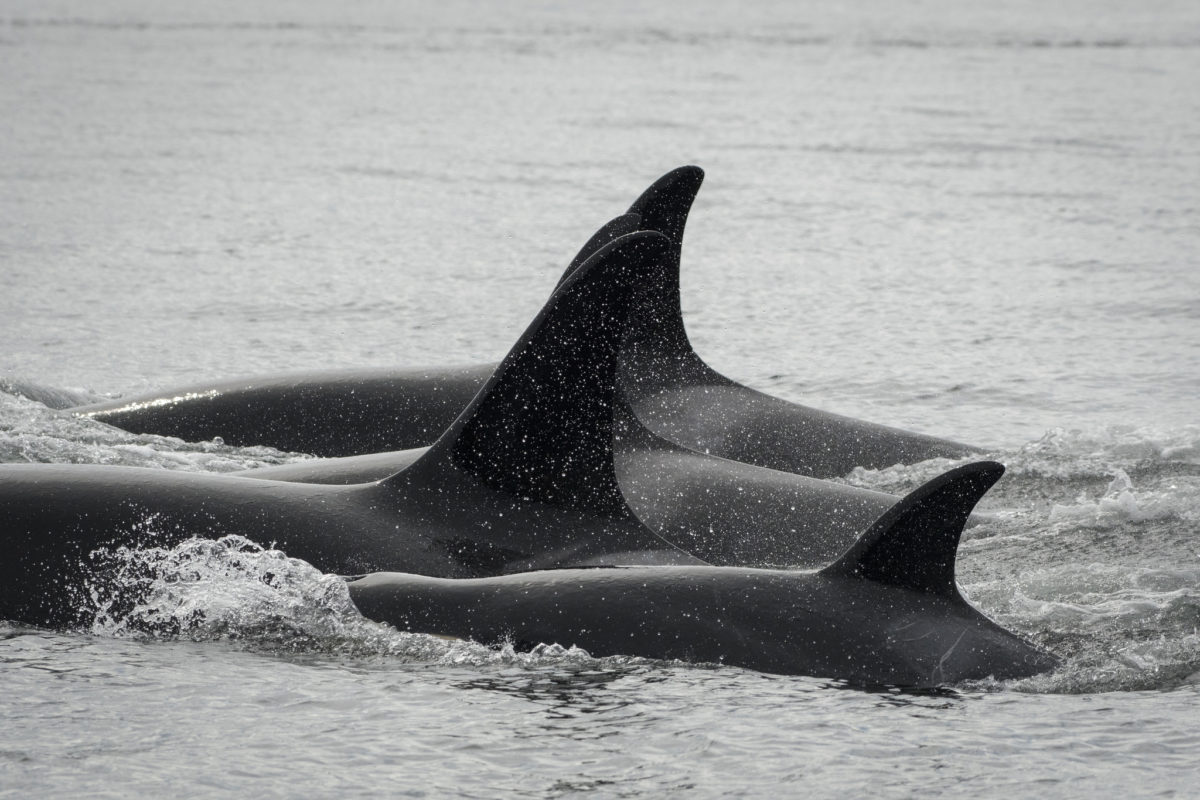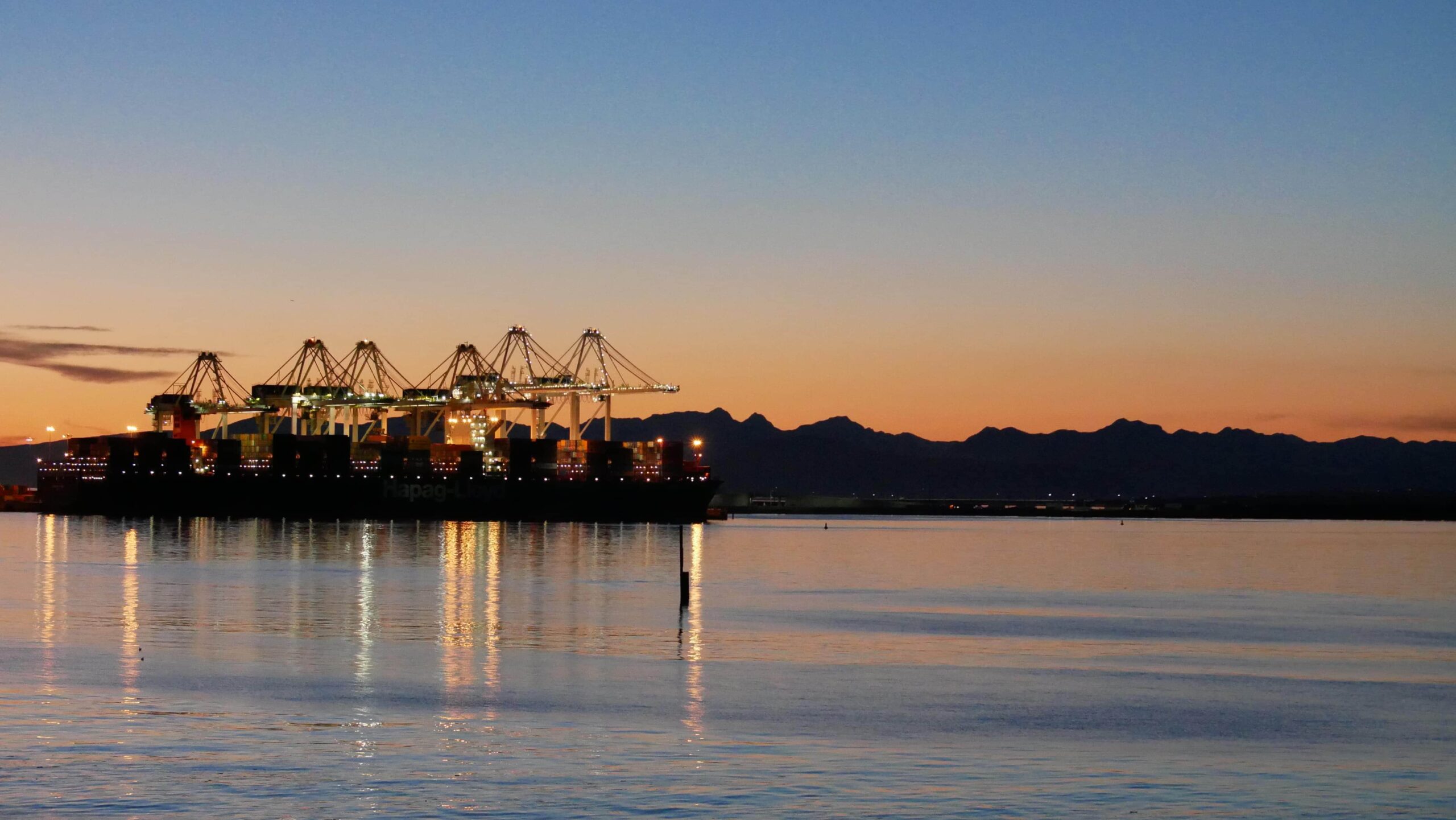
The federal government ‘sees a long-term future for the oilsands.’ Here’s what you need to know
An internal document obtained by The Narwhal shows how the natural resources minister was briefed...
Get the inside scoop on The Narwhal’s environment and climate reporting by signing up for our free newsletter.
Wildlife biologist Brad Hanson was worried about the orca calf the first time he saw her.
The calf, born into a pod of endangered southern resident killer whales that live off the coast of B.C., appeared to be struggling. At times her breathing seemed weak. And even when her mother, known as Tahlequah or J35, helped push her, she still wasn’t very active, Hanson, who works for the U.S. government’s Northwest Fisheries Science Center in Seattle, told The Narwhal. “Usually, they’re kind of wiggly.”
A little over a week later, on New Year’s Day, Hanson and his team confirmed the calf, known as J61, had died. But Tahlequah wasn’t ready to let her go. As of Jan. 10, when she was spotted with her pod in Haro Strait, she was still carrying her calf’s body — just as she carried the body of a calf she lost in 2018, garnering worldwide attention. “It’s just heartbreaking to see,” Hanson said.
“Heartbreaking” is also how Imalka Nilmalgoda, a lawyer with the environmental law charity Ecojustice, described the loss of another calf. “It underscores the urgency of this situation and the real crisis that the southern residents face,” she said in an interview.
For years, Ecojustice has been trying to persuade the federal government to issue an emergency order to protect the southern resident orca population. Despite twice finding that the population faces imminent threats to its survival from a lack of salmon, as well as from pollution and ship traffic, the federal government has yet to issue an emergency order.

Last June, Ecojustice, acting on behalf of six conservation groups, again petitioned the federal government to issue an emergency order to protect the endangered whales.
Emergency orders are a rarely used tool under the federal Species At Risk Act that allow the federal government to intervene to protect species facing imminent threats to their survival and recovery.
Once a petition for an emergency order has been made, the ministers responsible are required to determine whether the species in question faces imminent threats.
In late November, Fisheries and Oceans Canada and Parks Canada determined southern resident killer whales are indeed facing imminent threats to their survival. The agencies had already made that same determination in 2018, following an earlier Ecojustice petition calling for an emergency order.
The ministers responsible for both agencies are now obliged under the Species At Risk Act to recommend the federal cabinet issue an emergency order, Nilmalgoda explained. But the timeline for the recommendation is uncertain.

In an emailed statement to The Narwhal, Craig Macartney, a spokesperson for Fisheries and Oceans Canada, said the ministers will be engaging cabinet “regarding the making of an emergency order and they acknowledge the urgency.”
Macartney added that Fisheries and Oceans Canada is consulting with potentially affected First Nations as part of this process.
While the Species At Risk Act doesn’t specify a timeline for recommending an emergency order once an imminent threat determination is made, Nilmalgoda said the courts have made it clear “urgent action is required … and that governments should act quickly and without delay.”
Last June, the Federal Court ruled that Environment and Climate Change Minister Steven Guilbeault broke the law when he took eight months to recommend cabinet issue an emergency order to protect endangered spotted owls. In October 2022, when Ecojustice petitioned the minister to issue the order, there was just one spotted owl left in the wild in B.C.
“I find it difficult to fathom how a period of more than eight months could be reasonable once the opinion has been formed that there exist imminent threats to the species’ survival or recovery,” Justice Yvan Roy wrote in the decision. “Either the threats are imminent or not. Either the threats concern the survival or recovery of the species or they do not.”
A recommendation to cabinet does not mean an emergency order will be made.
The federal government declined to make an emergency order to protect spotted owls, just as it declined to issue an order to protect the southern residents in 2018, citing measures that had been implemented to address threats. Those included fishery closures, Chinook salmon habitat restoration, voluntary vessel slowdowns and mandating vessels to keep 200 metres away from the whales.
In November, the latest imminent threat assessment found there have been “no significant changes” to the threats facing southern resident killer whales. The population is still declining despite the additional measures.
“This could be because it is still too early to observe the biological effects of the 2018 measures, as [southern resident killer whales] are long-lived animals that reproduce slowly, and their recovery is expected to take time,” the Fisheries and Oceans assessment noted.
But Ecojustice contends not enough is being done to protect the southern resident population from further harm, or to support its recovery.
The Marine Mammal Commission, a U.S. government agency that provides independent scientific policy oversight, estimates more than 200 animals may have been in the southern resident population historically. In 1973, with only about 70 whales left in the population, the practice of capturing orcas for display in aquariums was outlawed, offering some hope for recovery. By 1996, the population was close to 100. Then things took another turn for the worse.
In 2003, when southern resident killer whales were listed as endangered under Canada’s Species At Risk Act, the population was 85. Today, there are just over 70 whales left split across three pods: J, K and L.
The southern residents spend much of their time in the coastal waters of southern B.C. and Washington state, though they do travel as far south as California. These are noisy, heavily trafficked waters used by ships, as well as fishing and recreational boats. Ecojustice warned in its petition that the threats facing southern residents could worsen as new projects — such as the Trans Mountain pipeline expansion, Roberts Bank port expansion and the Tilbury liquefied natural gas (LNG) proposal on the south arm of the Fraser River — increase ship traffic.
Underwater noise is a major concern, as it interferes with the ability of animals such as whales and dolphins to communicate and find food through echolocation. Food supply is also affected by salmon declines, driven by habitat degradation along major rivers.
A host of other factors include extensive pollution and inbreeding. “We have found that southern residents are much more inbred than most of the other killer whale populations in the north Pacific,” Hanson said.
High levels of inbreeding can cut the whales’ lifespans in half, affecting reproduction and limiting the potential for population growth.
It also makes the whales more vulnerable to the environmental threats they’re facing.

Fisheries and Oceans Canada spokesperson Macartney noted other federal government measures are in place to protect southern resident killer whales, including area-based fishing closures, mandatory and voluntary vessel slowdowns in certain areas and supplementing Chinook salmon stocks through a hatchery program.
In its petition, Ecojustice recommended a series of additional actions, including increasing the distance vessels must keep from the whales from 200 metres to one kilometre, implementing a strategy to rebuild wild Chinook stocks and prohibiting further increases in marine shipping in the Salish Sea until a cumulative-effects management plan that includes underwater noise is in place.
The recent loss of the newborn calf “only serves to increase the urgency with which the government has to act,” Nilmalgoda said.
In 2018, Tahlequah’s calf lived just half an hour before she died. In what appeared to be a heartwrenching display of grief, the mother orca carried her body for 17 days, travelling more than 1,500 kilometres before letting her go. To see another calf die, Hanson said, is “just devastating.”
Get the inside scoop on The Narwhal’s environment and climate reporting by signing up for our free newsletter. On March 17, federal Conservative Leader Pierre Poilievre...
Continue reading
An internal document obtained by The Narwhal shows how the natural resources minister was briefed...

Notes made by regulator officers during thousands of inspections that were marked in compliance with...

Racing against time, dwindling habitat and warming waters, scientists are trying to give this little-known...
